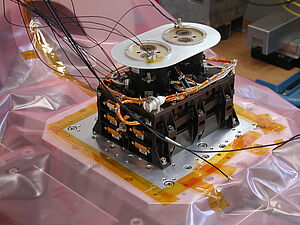ASPOC

In low density plasma regions, a satellite exposed to sunlight becomes positively charged (up to tens of volts) due to the emission of photoelectrons. The spacecraft potential can interfere with the measurements of particles. Positively charged ions can be repelled from the spacecraft making their measurement more difficult, while negatively charged electrons can be accelerated into the detector potentially reducing the lifespan of the micro-channel plates of the sensors. The spacecraft potential can also significantly influence the accuracy of the electric field measurements. The ASPOC instrument regulates the spacecraft potential by firing positively charged indium ions allowing more accurate electric field and particle measurements to be performed.
ASPOC was built under IWF lead in cooperation with RUAG Space Austria and FOTEC Forschungs- und Technologietransfer GmbH. Each ASPOC instrument contains four ion emitters, with only one emitter active at a given time. Compared to previous missions, the design of the emitter and the on-board electronics as well as the control software have been improved.